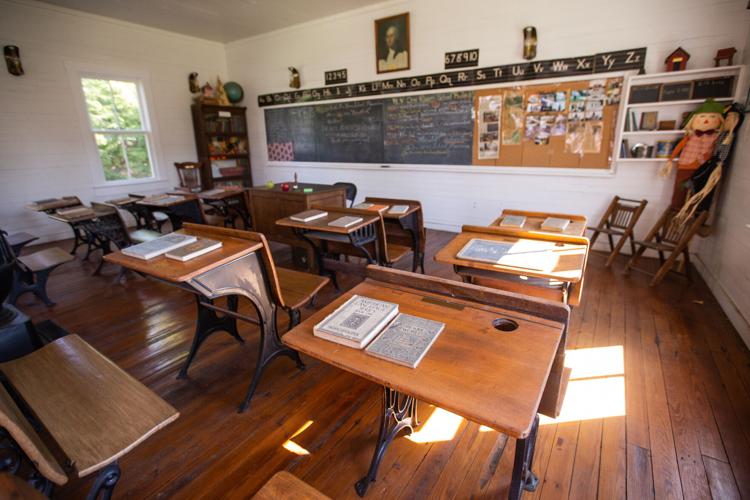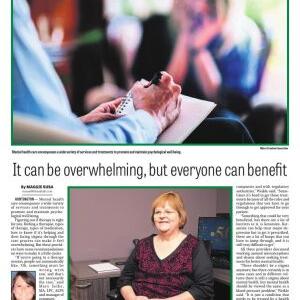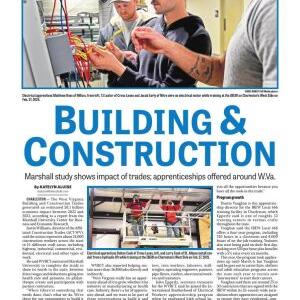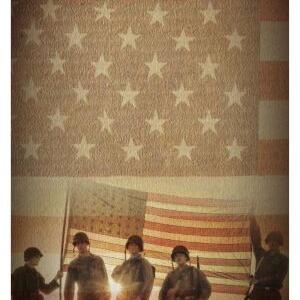HUNTINGTON ňňň˝ĘÓƵ” The Union School, often called the ňňň˝ĘÓƵśPunkin Center School,ňňň˝ĘÓƵť was a one-room schoolhouse on Guyan Creek Road near Glenwood, serving students in grades one through eight from 1899 to 1955.
In 1989, Marshall University history professor Paul Lutz launched a research project on one-room schoolhouses across West Virginia after a student in his class spoke to him about interviewing a former one-room school teacher.
ňňň˝ĘÓƵśThat kind of started him thinking about the history of education. ... He wanted to bring a one-room school to the campus so that students could see what education was like two centuries ago,ňňň˝ĘÓƵť said Teresa Eagle, dean of the college of education and professional development.
The schoolhouse was donated by Tina Bryan and restored by Phil Cline, who funded its relocation to the Marshall campus in October 1995.
Three decades later, The Union School has been officially listed on the Country School ňňň˝ĘÓƵsociation of America National Schoolhouse Registry Program.
A plaque honoring the schoolhouse will be installed .
Today, the schoolhouse serves as a museum, featuring donated artifacts from the days when it was used as a place of instruction, like desks, books and chalkboards. Eagle said students will sometimes visit the schoolhouse on field trips.
One retired faculty member, Neil Arneson, sometimes puts on ňňň˝ĘÓƵśhistory aliveňňň˝ĘÓƵť presentations, in which he dresses as a school teacher and tells the story of what a schoolhouse mightňňň˝ĘÓƵ™ve been like over a century ago.
ňňň˝ĘÓƵśItňňň˝ĘÓƵ™s important for students going out to teach, that they have a sense of history. ňňň˝ĘÓƵ¦ Most of them have never seen anything other than what I would call a modern schoolhouse. And as you go into this, it helps you to understand how far weňňň˝ĘÓƵ™ve come, and the things that we have today that we take for granted,ňňň˝ĘÓƵť Eagle said.
ňňň˝ĘÓƵśItňňň˝ĘÓƵ™s also important to see what kinds of things that we are bringing back because teaching in a one-room schoolhouse was different than what our students have experienced, but it actually has lots and lots of valuable things that are important today.ňňň˝ĘÓƵť
In the center of the schoolhouse is a floor-to-ceiling coal stove that Eagle said wouldňňň˝ĘÓƵ™ve had to be heated in the mornings by the schoolhouse teacher to keep the building warm throughout the day or heat up studentsňňň˝ĘÓƵ™ lunches.
In one-room schoolhouses, students would often help each other learn, in order to cover educational content for several grade levels at once.
ňňň˝ĘÓƵśAnd so there was a lot of collaboration. ňňň˝ĘÓƵ¦ And you know, weňňň˝ĘÓƵ™re seeing that kind of technique can be very valuable today, a well as historically,ňňň˝ĘÓƵť Eagle said.
Expectations were different for teachers, Eagle said, as the public would often have rules, down to the way they dressed, because they were considered an influence to the children in the area. Even when Eagle was in school, she said teachers were not allowed, in many cases, to continue teaching if they were pregnant.
Eagle said, in one-room schoolhouses, it also was typical for parents or members of the community to come in and watch the class. She said the schools were attended by students close by, as there werenňňň˝ĘÓƵ™t school buses or roads passable in rural West Virginia at the time, and many children walked to school through hills and farmland.
The Union School, Eagle said, was a standard-sized schoolhouse, holding around 20 students max. But there were also larger schoolhouses, and occasionally, another room would be added onto them to hold more students.
ňňň˝ĘÓƵśThere would potentially be more schools, just because it was all spread out,ňňň˝ĘÓƵť Eagle said. ňňň˝ĘÓƵśNow thatňňň˝ĘÓƵ™s what youňňň˝ĘÓƵ™re seeing happen today, too. This past year, there was a lot of stuff in the paper about ňňň˝ĘÓƵ¦ consolidating some schools. And thatňňň˝ĘÓƵ™s kind of taking things in the other direction.
ňňň˝ĘÓƵśWe can do that today, because transportation is better, communication is better, but you still hear ňňň˝ĘÓƵ¦ people still arguing with this argument that they donňňň˝ĘÓƵ™t want to lose their little community schools.ňňň˝ĘÓƵť
Eagle pointed to ňňň˝ĘÓƵśmicro schoolsňňň˝ĘÓƵť as a modern example of what the historical one-room schoolhouse mightňňň˝ĘÓƵ™ve been like.
While Eagle said many schoolhouses in the state werenňňň˝ĘÓƵ™t well-taken care of after they were abandoned, thereňňň˝ĘÓƵ™s currently one at Heritage Farm in Huntington, in Lewis, Braxton and Doddridge counties and one at Fairmont State University.
Groups may The Union School by appointment only. A tour may be scheduled with Arneson by calling 304-633-3935 or emailing oneroommu@gmail.com.















